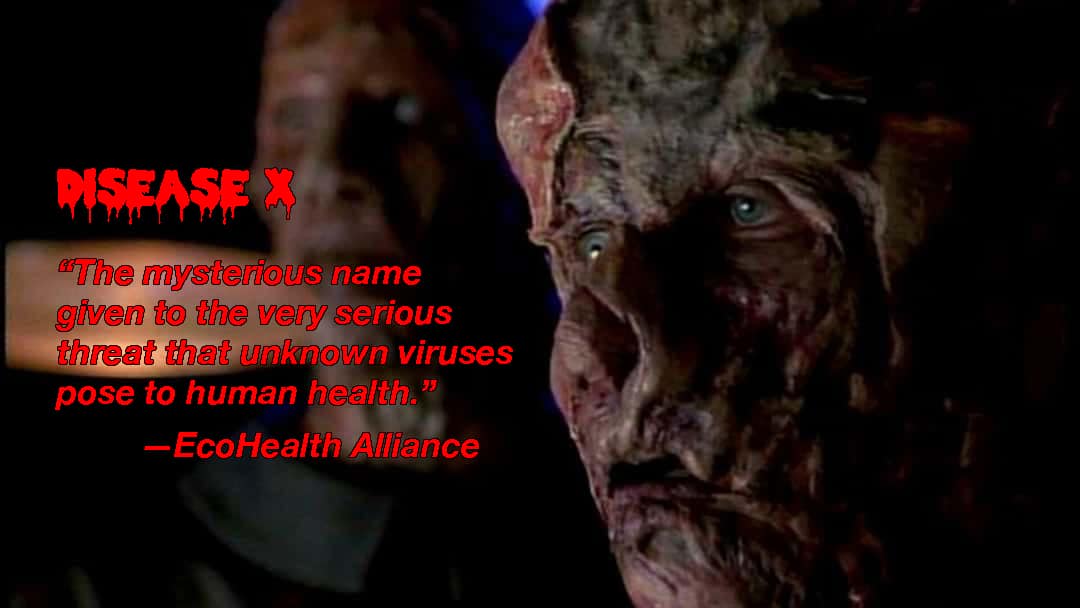

Mission Creep: “Disease X”
Hot on the heels of the Covid Emergency being declared over, The Coalition for Epidemic Preparedness Innovations (CEPI) issued a call for eternal vigilance against future viral invasions forecasting that “future outbreaks of ‘Disease-X’ are inevitable.”
Echoing this Cassandra-esque pronouncement WHO director-general Dr. Tedros Adhanom Ghebreyesus, at the recent 76th World Health Assembly, warned of lurking pathogens “even deadlier” than Covid-19.
Amidst this latest flurry of fatalistic prognostications it’s worth asking a few questions: Who is CEPI and what is this amorphous ‘Disease-X’?
Who is CEPI?
Advertising itself as, “an innovative global partnership working to accelerate the development of vaccines against epidemic and pandemic threats”, CEPI developed its original business plan in November of 2016 and was formally launched at the 2017 World Economic Forum in Davos by a consortium that included the governments of Norway, Japan, and Germany, The Wellcome Trust, and the Gates Foundation.
Early on CEPI alluded to Disease X noting that Covid-19 was its first such candidate:
“When CEPI was established in 2017 we classed Disease X as a serious risk to global health security, for which the world needed to prepare. Prior to the COVID-19 pandemic, CEPI had initiated a rapid response programme—including mRNA vaccines—against novel pathogens. [Bold added] Our goal was to be able to start safety testing of vaccines within months of a new pathogen being genetically sequenced.”
CEPI’s role of bringing together players in biotechnology, Big Pharma, governmental agencies, and University Research and Development departments is paired with a focus on global immunization as it works “to accelerate the development of vaccines against emerging infectious diseases.”
Another of CEPI’s stated goals is, “to be able to start safety testing within months of a new pathogen being genetically sequenced” employing innovative “vaccine platform technologies” so that we can rapidly manufacture vaccines against many different types of disease.”
These slippery ambitions require a potential foe to vaccinate against- enter ‘Disease X’.
In February of 2021 Senior Communications and Advocacy Manager for CEPI Tom Mooney said that preparing for the next “Disease X” will require that, “we can produce vaccines against Disease X in a matter of months instead of a year or more, we could revolutionize the world’s ability to respond to epidemic and pandemic diseases.”
Not to be left behind on the fear-mongering bandwagon Mooney added, “Disease X and other emerging infectious diseases pose an existential threat to humanity. But for the first time in history, with the right level of financial commitment and political will, [emphasis added] we could credibly aim to eliminate the risk of epidemics and pandemics.”
By March of 2021 CEPI had laid out its ambitious 5 year vaccine program for 2022-2026, which became known as CEPI 2.0, with a stated goal of reducing future vaccine development to 100 days:
“CEPI believes 100 days from the time of pathogen characterisation to availability of clinical data for deciding emergency use listing should be the aspiration. This “moon-shot” target focusses on shortening timelines by advancing vaccine platforms so that during outbreaks, the world can specifically channel resources towards generating sufficient safety data related to the specific pathogen before vaccines can be deployed.”
CEPI CEO Richard Hatchett affirmed these ambitions, “We’ve got to compress the timelines for development radically over even what was accomplished last year, which itself was a radical compression of anything that had ever been accomplished before.”
CEPI’s star has risen as it has become the driving force in orchestrating a well connected and well funded ‘forward looking’ plan designed to hasten the ‘speed of science’ in order to combat future threats such as ‘Disease X.’
What is “Disease X?”
According to CEPI’s list of priority diseases, Disease X, “represents the knowledge that a serious international epidemic could be caused by a pathogen currently unknown to cause human disease.”
In February 2018, Disease X was added to the WHO’s updated list of priority diseases. It currently sits at the bottom of the list, the only disease noted with an asterisk, utilizing the same ambiguous definition as conceived by CEPI while adding, “The R&D Blueprint explicitly seeks to enable early cross-cutting R&D preparedness that is also relevant for an unknown “Disease X”.
As far back as 2018 CEPI’s CEO Richard Hatchett was chirping about this ephemeral future contagion stating, “It might sound like science fiction, but Disease X is something we must prepare for”, adding that, “preparation requires investment.”
Parroting former Secretary of Defense Donald Rumsfeld’s infamous gaffe, Pranab Chatterjee, a researcher at the Department of International Health at Johns Hopkins Bloomberg School of Public Health, released a glossy powerpoint presentation titled, One Health, “Disease X” and the Challenge of “Unknown” Unknowns” and subsequently told the National Post,”it is not an exaggeration to say that there is the potential of a Disease X event just around the corner.”
If we are to understand the lessons of history we might wish to remind ourselves that the “unknown unknown’s” was in reference to a lack of evidence linking the government of Iraq with the supply of WMD’s to terrorist groups but used nevertheless as a phony justification for the invasion of Iraq.
With that in mind we might also wish to consider that the techniques utilized to implant Disease X in the media landscape are intended to perpetuate fear and anxiety in the public mind.
It is universally understood that fear and anxiety are two of the most powerful components of the human psyche and are regularly used as a means for social control. The annals of history are replete with examples of dictators and totalitarian societies deviously manipulating these primal emotive forces to exploit entire populations.
The best storytellers understand that invisible menace has the potential to be more terrifying than violence as it can last longer- you can draw it out for a long time- even an eternity- the thing you can’t see. This is why the perpetuation of the invisible virus which can strike anyone at any time is particularly effective as a control mechanism.
To create that atmosphere of imperceivable dread CEPI and the WHO have produced the perfect disease, ‘Disease-X’, an everywhere-and-nowhere, ill-defined invisible terror that could strike at any given moment in the foreseeable future- eternally justifying the Biosecurity State as well as perpetual profits for the Health Industrial Complex.




